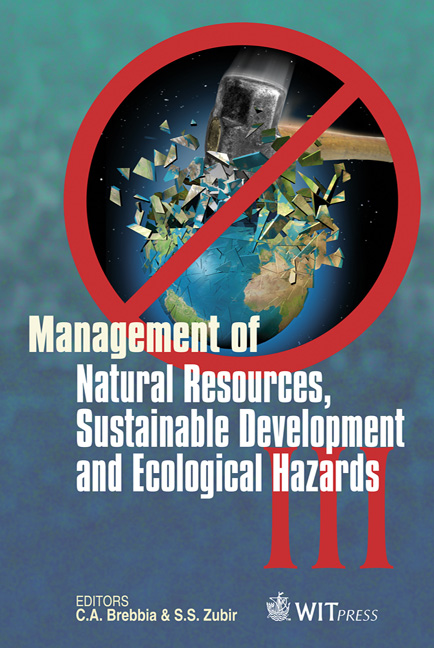High Organic Loading Rate And Waste Stabilization Pond’s Operation Efficiency: A Case Study
Price
Free (open access)
Transaction
Volume
148
Pages
10
Page Range
415 - 424
Published
2011
Size
353 kb
Paper DOI
10.2495/RAV110381
Copyright
WIT Press
Author(s)
Sh. Jamshidi, G. B Gholikadi & H. R. Orumieh
Abstract
Liquid waste management is an important component of sanitation activities. Waste stabilization pond system is very low cost, easy for maintenance and the stabilized water outflowing from the system can be used for irrigation purposes in agriculture, horticulture, etc. The affect of high organic loading rate and occurrence reasons of purple sulfur bacteria (PSB) in waste stabilization ponds were investigated. Chemical parameters which affect on PSB growth like COD, and hydrogen sulfide (H2S) were observed monthly. The mixed culture populations of PSB were considered and determined by spectro-photometric method. The cell suspension was whitish pink when elemental sulfur globules occurred inside the cells, and turned purplish red once the globules were consumed. The measurement of flow was carried out by means of a Partial flume in which located at the inlet channel. Measurement of flow was done simultaneously with wastewater sampling. The measured average of COD concentration of raw wastewater with around 1520.33 mg/l was much higher than the expected design concentration of 550 mg/l, respectively, for COD. Thus, the raw wastewater in Hoveizeh can be classified as a high strength in terms of COD. Results showed that the PSB dominated in two periods, which the first was in midsummer (in primary facultative pond) and the second was in midwinter (in tertiary facultative pond). This condition was occurred by high organic loading rate (OLR) and high concentration of H2S which were caused overcoming of the PSB over algae. Results showed that the OLR was the main affecting parameters in the overcoming of PSB.
Keywords
waste stabilization pond, operation, OLR, COD, H2S, purple sulfur bacteria





